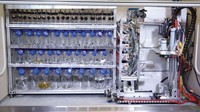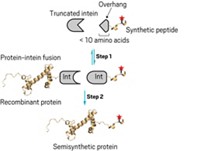Advertisement
Grab your lab coat. Let's get started
Welcome!
Welcome!
Create an account below to get 6 C&EN articles per month, receive newsletters and more - all free.
It seems this is your first time logging in online. Please enter the following information to continue.
As an ACS member you automatically get access to this site. All we need is few more details to create your reading experience.
Not you? Sign in with a different account.
Not you? Sign in with a different account.
ERROR 1
ERROR 1
ERROR 2
ERROR 2
ERROR 2
ERROR 2
ERROR 2
Password and Confirm password must match.
If you have an ACS member number, please enter it here so we can link this account to your membership. (optional)
ERROR 2
ACS values your privacy. By submitting your information, you are gaining access to C&EN and subscribing to our weekly newsletter. We use the information you provide to make your reading experience better, and we will never sell your data to third party members.
Environment
Faster And Cleaner Peptide Synthesis
High-efficiency microwave method cuts cycle times to four minutes while achieving high-purity peptides and reducing chemical waste
by Stephen K. Ritter
February 10, 2014
| A version of this story appeared in
Volume 92, Issue 6
Solid-phase peptide synthesis is an indispensable method for constructing natural and modified peptide sequences. But the multistep process needed is time-consuming and generates a significant amount of chemical waste relative to the small amount of peptide generated. For example, a 100-mg synthesis of a peptide 20 amino acids long can take 24 hours to complete and produce several liters of waste. Jonathan M. Collins and coworkers at CEM Corp., a manufacturer of microwave reactors, have developed a high-efficiency solid-phase peptide synthesis method that cuts cycle time to four minutes and produces high-purity peptides while using 90% less solvent than conventional approaches (Org. Lett. 2014, DOI: 10.1021/ol4036825). Solid-phase peptide synthesis involves attaching a protected amino acid to a polymer bead and then coupling additional amino acids one at a time to build the peptide chain. This stepwise cycle requires deprotection, coupling, and reprotection steps at the terminal end of the growing chain. Among the improvements, the researchers found that precisely controlled rapid microwave heating helps prevent peptide aggregation and that solvent selection and streamlined washing steps lead to faster cycle times. The CEM team used the method to prepare acyl carrier protein and amyloid-β peptide with up to 93% purity in less than four hours.





Join the conversation
Contact the reporter
Submit a Letter to the Editor for publication
Engage with us on Twitter